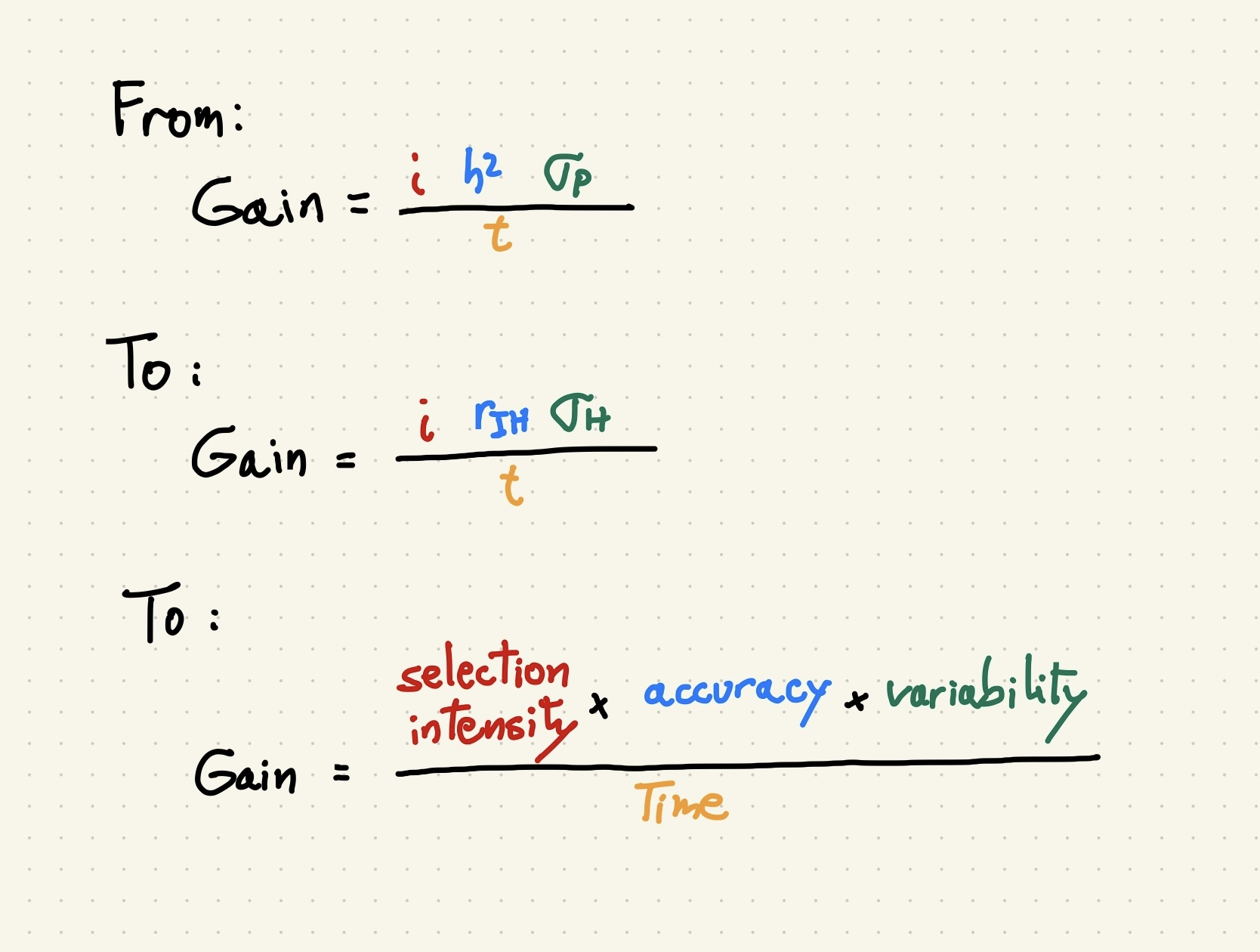At the core of your breeding programme
Surely you have been in this situation: meeting, there is coffee and biscuits at the back, some fruit if you’re lucky, and people with ideas flying about how to improve or change the breeding programme. Some of the ideas look easy to implement, others need a huge amount of work, and everyone has a different favourite.
Breeding programmes are vehicles to deliver genetic gain, which results on extra profit (or, at least, on maintaining your competitive position). So it makes sense to evaluate the effect of every suggested change to the programme under the lens of the Breeder’s Equation.
The Breeder’s Equation #
Typically books present the simplest formula:
$$\mbox{Gain} = i h^2 \sigma_p$$which works fine when dealing with a single trait, during the first round of selection based on an individual’s own record.
In reality, we are likely dealing with multiple traits and a more advance breeding programme. We move to
$$G = i r_{IH} \sigma_H$$. Now H is a total genetic economic value involving multiple traits, targeted by a selection index I, that takes into account all the genetic and economic information. This is great for calculations but harder to communicate.
It is probably easier to keep in mind that
Gain = (selection intensity x accuracy x variability) / time.
The meaning of each equation term is much easier to relate to something tangible. Focusing the meeting on these terms seems much more productive to me.
Did you develop a new way of phenotyping a hard-to-assess characteristic? We can now push selection intensity. Are we bringing new material to the breeding programme? That will increase variability. Are we paying for a new chip with N thousand SNP? That shortens time, maybe at lower accuracy but may also affect selection intensity.
We can look at the ideas, have basic discussions and later simulate those ideas (work in silico if you want to be posh).
